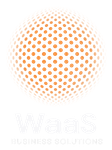The WaaS (Workforce-as-a-Service) Organizational Design Approach is an emerging model that reimagines how organizations structure their workforce. This approach allows companies to build and manage teams in a more flexible, on-demand manner by leveraging external talent as a service, much like cloud computing does with IT resources. Here’s a breakdown of what the WaaS approach involves:
On-Demand Workforce:
- Companies can scale their workforce up or down as needed by tapping into a pool of freelance, contract, or temporary workers. This provides agility in responding to market demands without the long-term commitment of traditional employment
Diverse Talent Pool:
- WaaS allows access to a global talent pool, enabling organizations to find specialized skills that may not be available locally. This model is particularly useful for projects requiring niche expertise.
Cost Efficiency:
- By employing workers on an as-needed basis, organizations can reduce costs related to full-time salaries, benefits, and overhead. It also allows businesses to avoid costs associated with hiring and firing, as the workforce is more fluid.
Technology-Driven Management:
- The WaaS model often relies on digital platforms that facilitate the hiring, management, and payment of external talent. These platforms can include features like talent matching, project management, and performance tracking, all integrated into a seamless service.
Strategic Flexibility:
- Organizations can rapidly reconfigure teams to align with changing business strategies, making it easier to pivot in response to new opportunities or threats. This flexibility can provide a competitive advantage in fast-moving industries.
Employee Experience:
- While WaaS emphasizes flexibility for the organization, it also offers benefits to workers by providing them with more autonomy and control over their work. However, it also comes with challenges, such as job security and benefits.
Risk Management:
- With WaaS, organizations can manage risks associated with scaling operations, as they are not committed to a permanent workforce. This approach allows businesses to test new markets or initiatives with a temporary workforce before making long-term investments.
Organizational Culture:
- Implementing WaaS can impact organizational culture, as it introduces a more fluid and dynamic workforce.Companies may need to adapt their culture to integrate external workers and ensure that they feel part of the team, even if only temporarily.
The WaaS Organizational Design Approach represents a shift from the traditional, hierarchical model of employment to a more flexible, networked approach that leverages external talent as a strategic resource. It’s particularly relevant in the gig economy and industries where rapid change and innovation are critical.


Leave A Comment